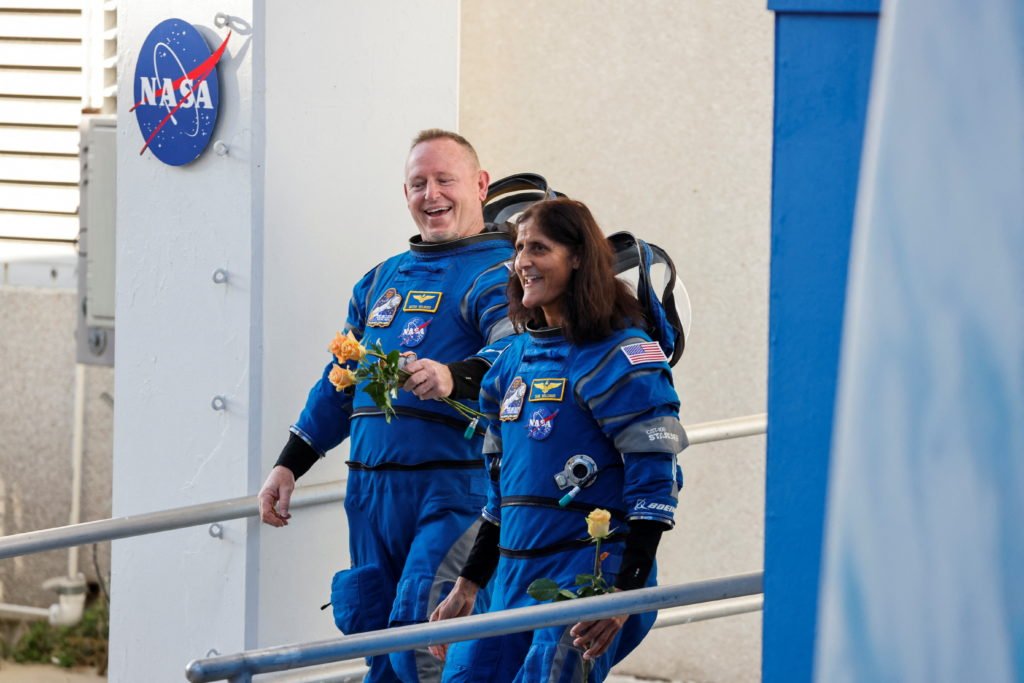NASA astronauts Sunita Williams and Butch Wilmore returned to Earth after nine months of stay on the International Space Station (ISS). Bill Hemmer, co-anchor of “America’s Newsroom” interviewed the pair exclusively at NASA’s Johnson Space Center in Houston, Texas, on Monday. They discussed their extended mission, the extension of their stay, changes in space exploration and their commitment to the country when in space.
When she was told that she would not be returning home she said, “I said to myself, ‘It’s time to adjust myself’.” She admitted to being a bit happy about the fact that they were going to spend more time in space. “If our ride home was delayed until February due to decisions made on the ground, I thought, ‘Let’s make the most of it,’” Williams said. According to Williams, life in space is exciting and she is impressed by the scientific experiments being conducted around them and the improvements that have been made to the ISS since she last worked on it. “I feel honored to be able to contribute to this in any way,” she said.

Wilmore, however, looked at the bigger picture and not the personal feelings that one would have. I’m not here, nor am I concerned with how I feel, he told Hemmer. It is for the purpose of the human spaceflight program and the national goals of the country. He noted that he had to shift focus to what the country required from him, and this was based on his experience in high pressure military operations. “I thought about missing my daughter’s high school year — yes, it did,” he said. However, my family, my daughters, they have been prepared for such kind of challenges. We have instilled this in them.
The initial 8-day mission which started in June of the previous year was prolonged to more than 280 days after their Boeing Starliner spacecraft experienced mechanical problems. NASA concluded that it was unsafe to use the Starliner to transport the crew back to Earth and thus, the craft made the journey without the crew in September. In his reaction to the challenge, Wilmore noted that space flight is always difficult. “We are working with the latest technology, and it is not easy,” he stated. Williams also concurred with him and did not want to call the problems experienced by Boeing as a failure. “It is not about accusing anyone,” she said.
Wilmore also responded to the allegations that they were ‘abandoned’ or ‘left behind’ stating that everyone had a role to play. ‘They’ failed us, who are ‘they’? I was the commander of this test flight, and I did not ask every question that I could have. On reflection, there were some signs that I overlooked. Boeing has some responsibility for this, of course. So does NASA. We all do. There were some things in the testing and preparation that we did not foresee.” He took a positive stance and said, “I would rather gain experience from this than spend time on complaining.”
The astronauts came back home on March 18, 2021, through the NASA and SpaceX coordinated rescue mission. The operation made SpaceX and its CEO, Elon Musk, more famous. When Hemmer asked them what they would say to Musk and President Donald Trump who had criticized the Biden administration for not acting fast enough, Wilmore said, “I respect and trust you both. You’ve given me no reason not to. It is also encouraging to see our leaders take interest in human space flight. Their involvement is not only an improvement; it also makes our nation stronger. It is always positive when they are involved in such issues and activities that are easily seen and appreciated by many people.”
Williams added that she was grateful that the mission got so much attention. “Our nine months up there gave people like Musk and Trump a chance to see what is going on at the ISS and take it seriously,” she said. It shows the world that we are a nation that can accomplish difficult things like putting people into space, working in space and bringing them back home safely. It matters, and I am grateful for it.
After returning to Earth, Wilmore and Williams will share their deep space experience with the public during a postflight news conference at NASA’s Johnson Space Center in Houston on Monday, March 31, at 2:30 p.m. EDT.

